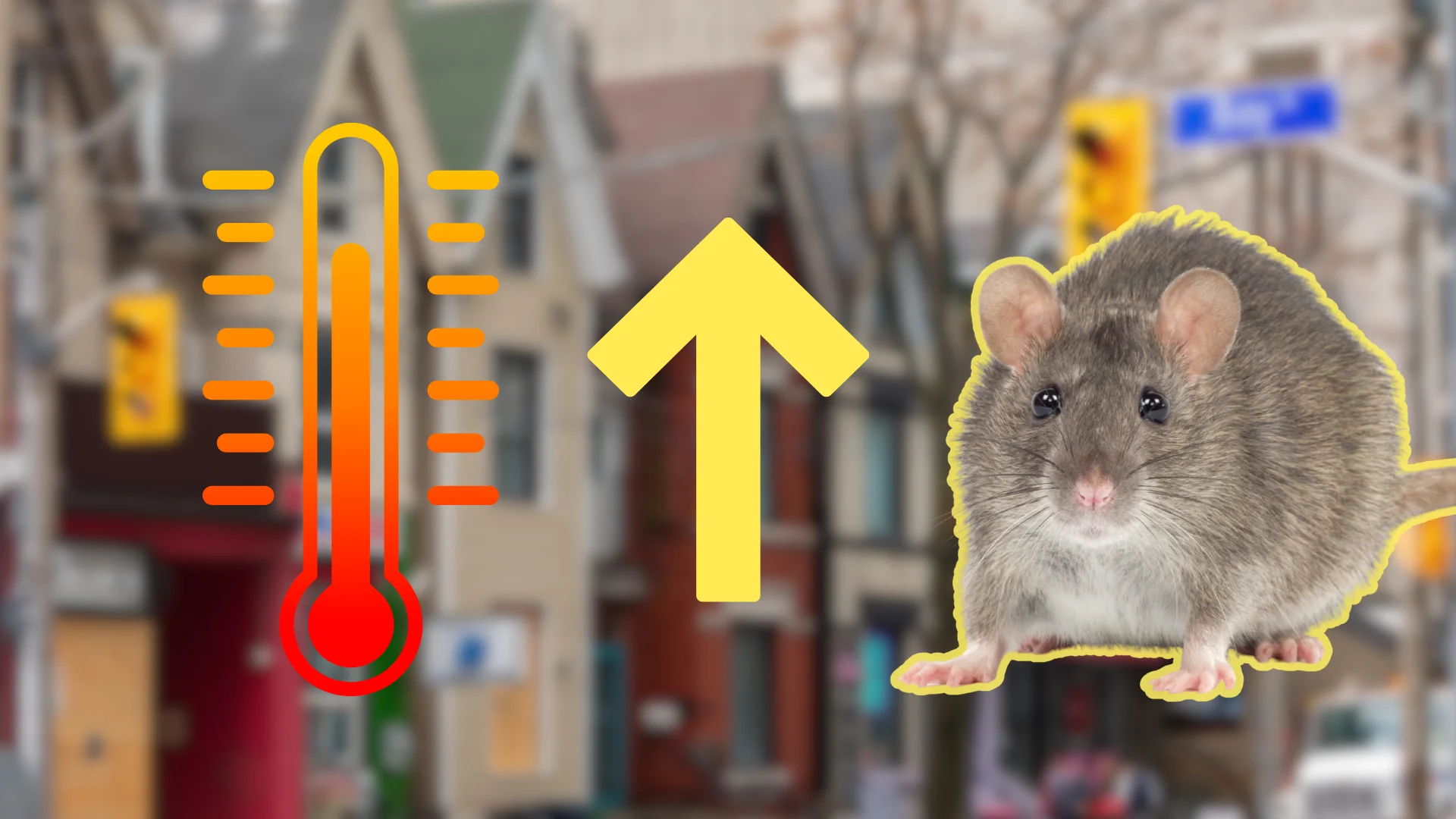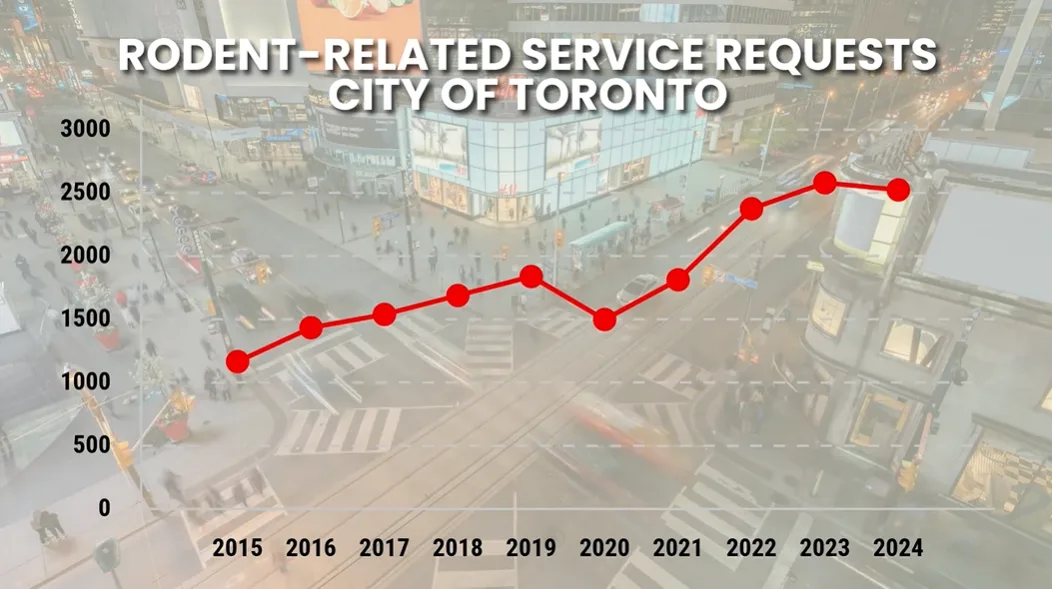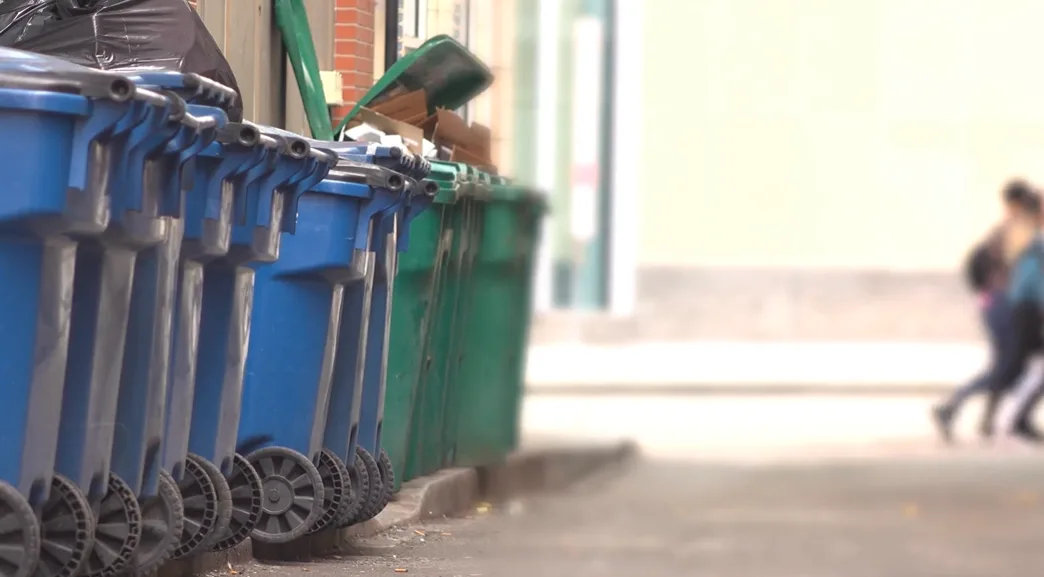
Climate change helping rats thrive in Canada, experts say
Rodent-related complaints have skyrocketed by more than 116 per cent in Canada’s largest city over the past decade
After years of rising complaints and worsening infestations, Toronto has all-but-officially declared a war on rats—one made necessary for reasons that may (or may not) surprise you.
“Climate change is a huge, huge driver here,” said City Councillor Alejandra Bravo in an interview with The Weather Network, explaining that Canada’s cold winter temperatures once served as a natural form of pest-control. Not to mention birth control.
DON’T MISS: Extreme weather may help invasive species outcompete native animals
“But with climate change, they can reproduce constantly,” she said. “A single pair can produce hundreds of offspring in one year. Maybe even as high as one thousand.”
Orkin Canada’s Bernie Grafe agreed that earlier springs and longer warm seasons are allowing rats to both survive in greater numbers and breed at breakneck speeds.
“Plus you're getting a rodent population that is getting smarter, getting more resilient,” he said.
“The longer that a rodent population will exist within a confined structure, the longer they have the ability to adapt. They just get smarter to the environment. They also get smarter at eluding traps. I mean, we have videos showing rats picking up sticks to set off rat traps, right?”

Warmer temperatures due to climate change have helped rat populations grow in urban centres such as Toronto. (A Shot of Wildlife)
Climate + construction = perfect rat storm
It’s not just the warmer weather. In Canada’s biggest cities, rats are also being pushed out of their underground nests by construction projects…and into nearby homes and businesses.
“As soon as you shake up the ground and those nests… now they need a new home to live,” said Grafe. “It doesn’t take long for them to look next door and go, ‘Hey, this looks great.’”
Nowhere is this more apparent than in Toronto, where near-constant development is wreaking havoc in some neighbourhoods.
Bravo, a key player behind the push for a coordinated rat response at City Hall, says she started hearing from residents about rats in 2022 while knocking on doors during the municipal election campaign.
RELATED: Winter is coming — it’s time to mouse-proof your home
“A woman called into our office saying that she lives near construction, that her daughter had been awoken in the middle of the night by a rat jumping on her bed. Imagine what that does to that family.”
Another woman reportedly told Bravo that “rats were sunning themselves outside her screen door” every day, forcing the woman to “bang on the glass every morning just to leave the house.”
WATCH: Invasive species cost $1.3 trillion to world economy over nearly a half century
Not just a Toronto problem
While Toronto may be the “rattiest city in Canada,” it’s not the only one seeing a surge. Cities like Montreal, Ottawa, and Vancouver are also experiencing more infestations—something experts warn could become the new normal as climate patterns shift.
“Ottawa is dealing with this right now… I got a request for an interview from Radio Canada in Montreal. They’re also looking at this,” Bravo says. “This isn’t a problem that’s going to go away. It’s a problem that’s only going to grow.”
To wit, a U.S.-based study published in early 2025 found “significant increasing trends in rat numbers” in 11 of 16 major cities worldwide. Toronto came in at spot number three with a faster-growing rat problem than Amsterdam, Buenos Aires and even New York City.
“Increasing rat numbers in cities are linked to climate warming, urbanization, and human population,” declare the study’s authors.
“Warming temperatures and more people living in cities may be expanding the seasonal activity periods and food availability for urban rats. Cities will have to integrate the biological impacts of these variables into future management strategies.”

A chart showing the number of rodent-related service requests in the city of Toronto from 2015-2024. (The Weather Network)
A coordinated approach
Rodent-related complaints have skyrocketed by more than 116 per cent in Canada’s largest city over the past decade. In 2015, the City of Toronto received 1,165 service requests related to rodents. By 2024, that number had grown to 2,523.
Unlike Alberta—where a no-nonsense Rat Control Program has kept infestations at bay—or Ottawa, which has a Rat Mitigation Working Group to coordinate citywide enforcement efforts, Toronto has never had a unified rat strategy.
Until now.
Councillors officially approved a new plan to get rodents under control during a meeting at City Hall on July 24. The initiative is expected to take effect sometime in 2026.
SEE ALSO: This can be a deadly time for one of Canada's 'most endangered' wildlife groups
First introduced by city manager Paul Johnson in June, the proposal outlines the creation of a dedicated rat response coordination team, public education campaigns, coordinated outreach to construction site managers, and blitz-style inspections in neighbourhoods with high rat density.
While rats are not considered a major public health threat in Toronto, officials say the psychological impact on residents is real.
“Some people living in areas with rat infestations also report psychological distress, disturbed sleep and stress arising from safety concerns from perceived risk of disease transmission and damage to their homes,” reads a report from the City of Toronto.
“Rat sightings may affect mental health through the perceptions of powerlessness, neighbourhood stigma and fear associated with other neighbourhood disorders.”
Prevention Over Elimination
So what can individuals do to help combat the problem?
Grave says the key is prevention, not just extermination. That means addressing the conditions that allow rats to thrive in the first place: garbage left in the open, structural gaps in buildings, and overgrown vegetation that offers shelter.
“If you eliminate breeding and feeding and places for them to hide… that could be something as simple as landscaping or garbage control,” he explains.
“Every time you have one of those situations in a back alley, where someone's decided that they're going to throw seven bags of garbage beside the dumpster because it's too full, well, guess what? You just created a buffet for every rat in the neighborhood.”

Rats can be attracted to garbage that hasn't been disposed of properly. (Lauren O'Neil/TWN)
Bravo agrees — and says public participation is going to be essential in any city’s success.
“We have to recruit the people of Toronto to be part of the solution,” she said, pointing to proper food disposal and waste management, but also more benign-seeming human behaviours.
“When people feed pigeons, they don't realize they're also feeding rats, and that's something that we have to start to tell people: don't feed wildlife, because the rats are going to come and eat it.”
“Rodent populations go hand in hand with human existence… the amount of garbage and food that we do produce,” said Grafe similarly.
“The one recommendation I do have is to just take action. Ignoring it is never going to solve the problem.”
Thumbnail image made with Canva Pro.

